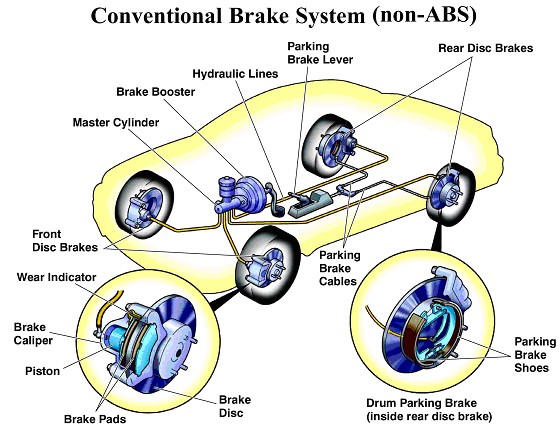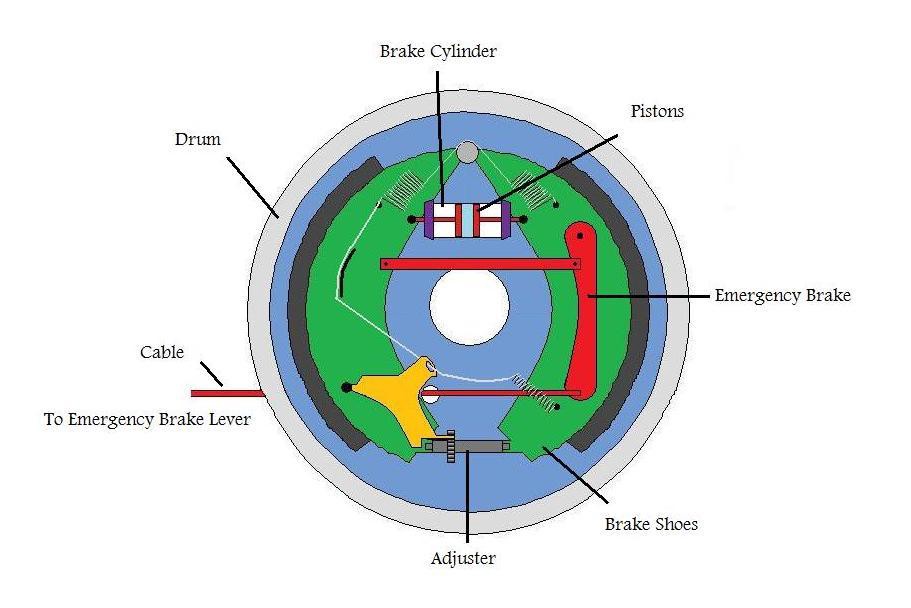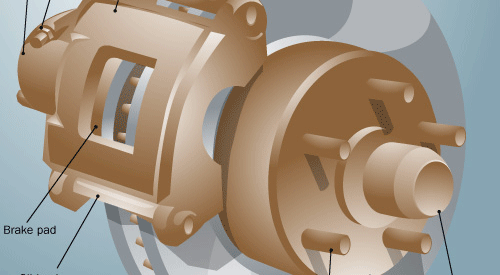
Hello guys today I will tell you how the braking system works in cars and types of brakes available in cars.
What are Brakes?
Brakes are one of the most important component in a vehicle. If you talk about performance it includes good brakes also, because if you go fast you need the same amount of stopping power to reduce that speed.
It is a mechanical device that absorbs energy from a moving system. It is used to slow or stop a moving vehicle, which is mostly accomplished by means of friction.
How Brakes system works?
There are two kind of brakes Disc Brakes and Drums Brakes. Disc brakes are mounted on front wheels and Drum brakes are mounted on rear wheels. In some modern high-end cars have Disc brakes on all four wheels.
These are the components used in brakes system:
- Brake Pedal: It is located in the center of the accelrator and clutch pedal. The brake system is activated only after pressing this pedal.
- Fluid Reservoir: It is the brake fluid or brake oil which is used on the braking system.
- Fluid Lines: These are pipes through which the brake fluid flows in the vehcile.
- Brake Pads: Steel backing plates used in disk brakes. It is usually made of ceramic, metal or other hard-wearing composite materials.
- Brake Shoes: 2 pieces of sheet steel welded together that carry the brake lining.
- Brake Drum: It is the rotating drum-shaped component used in drum brakes.
- Rotor: It is a cast iron brake disc connected to wheel and/or axle, sometimes made of reinforced carbon-carbon, ceramic matrix or other composite.
- Brake Lining: It is heat-resistant, soft but tough material with a high friction characteristic housed inside a brake shoe.
- Piston: It is a moving component contained by a cylinder.
- Caliper: A device on which brake pads and pistons are mounted
- Floating Calipers/Sliding Caliper: It moves relative to rotor; uses a piston on a single side of disc to push inner brake pad into braking surface before pulling caliper body in to apply pressure on opposite side of disc.
- Fixed Calipers: It does not move relative to rotor and is sensitive to imperfections; uses one or more single pairs of opposing pistons to clamp from each side of the rotor.
- Master Cylinder: A device that converts the non-hydraulic pressure from your foot into hydraulic pressure and controls slave cylinders at the opposite end of the hydraulic system.
- Vacuum Booster: A component used to enhance the master cylinder and augment pressure from a drivers foot through the use of a vacuum in the engine intake; only effective while vehicles engine is running.
When the driver presses the brake pedal there is a force generated which is boosted by the Vacuum from the engine. This boosting effect causes the brakes to respond more quickly.
This force from the vacuum booster pushes the piston inside the master cylinder against the spring force causing the brake fluid to flow under pressure. This pressurized fluid reaches the brake caliper(Disc Brakes) and brake cylinder(Drum Brakes) via fluid lines.
Disc Brakes

The pressurized fluid enters the brake caliper forcing the brake pads to move inwards against the revolving disc (which is connected to the front wheels). When the brake pads comes in contact with the disc, a friction is generated which reduces the speed of the disc which in turn reduces the speed of the vehicle and eventually stopping your vehicle.
Drum Brakes

The pressurized fluid now enters the brake cylinder inside the Drum brakes. There are piston inside these cylinders, these piston move outwards because of the brake pressurized fluid inside the cylinder. This outward movement of the piston cause the brakes shoes to move towards the rotating drum. When this brake shoes rub against the drum, friction is generated converting the kinetic energy into heat energy and thereby stopping your vehicle.
Types of Brake System
- Electromagnetic Brake System
- Electromagnetic brakes are getting popular now-a-days. It uses electric motor that is included in the automobile which help the vehicle come to a stop. It is mostly found in hybrid and electric cars and uses an electric motor to charge the batteries and regenerative brakes.
- Frictional Brake System
- It is the traditional braking system and commonly found in most of the automobiles. They are service brakes, and typically found in two forms; Pads(Disc) and Shoes(Drums). As the name implies, these brakes use friction to stop the automobile from moving. The pads are located on top of the disc which is rotating with the front wheel, and the shoes are located inside the drum which is rotating with the rear wheel. The pads will close in on the disc and stop the vehicle and the shoes will expand and rub with drum to stop the vehicle.
- Hydraulic Brake System
- A hydraulic brake system is composed of a master cylinder that is fed by a reservoir of hydraulic braking fluid. This is connected by an assortment of metal pipes and rubber fittings which are attached to the cylinders of the wheels. The wheels contain two opposite pistons which are located on the band or drum brakes which pressure to push the pistons apart forcing the brake pads into the cylinders, thus causing the wheel to stop moving.
Originally published at ReviewStories.


